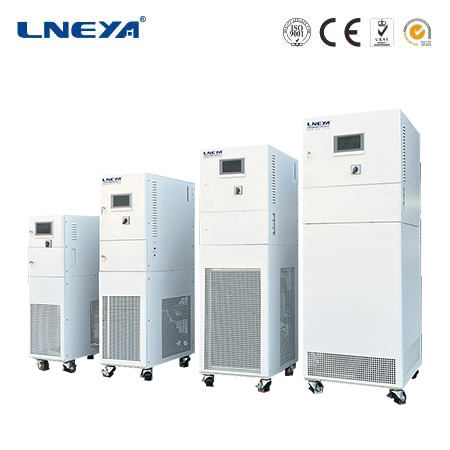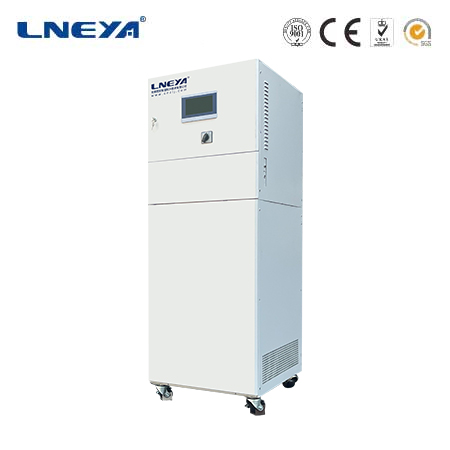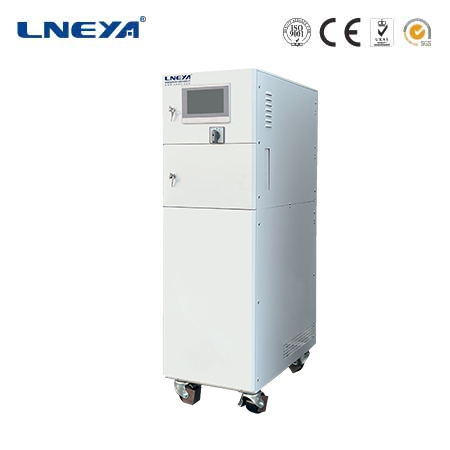thermal fluid heating
Thermal Fluid Heating: A Comprehensive Explanation
Thermal fluid heating is a vital technology in modern industrial processes, providing an efficient and reliable method of heat transfer. It has become an essential part of numerous industries due to its ability to deliver consistent heat and enable precise temperature control.

Definition and Basic Principle
Thermal fluid heating refers to a method of transferring heat energy from a heat source to a target system or material through the circulation of a fluid medium. The core principle behind thermal fluid heating is convective heat transfer. In this process, the thermal fluid is heated in a heater unit, and then pumped through a closed – loop system. As the hot fluid flows through pipes and heat exchangers, it transfers its thermal energy to the substances or processes that require heating.
The fluid then returns to the heater to be reheated, completing the cycle. This continuous circulation allows for the efficient and controlled transfer of heat, ensuring that the target system or material reaches and maintains the desired temperature. The choice of thermal fluid, system design, and control mechanisms all play critical roles in optimizing the performance of a thermal fluid heating system.
Types of Thermal Fluids
Thermal Oils
Thermal oils are one of the most commonly used thermal fluids in thermal fluid heating systems. They offer several advantages, such as a high boiling point, which allows them to operate at elevated temperatures without vaporizing. This property enables thermal oil – based systems to achieve temperatures ranging from 200°C to over 300°C. Thermal oils also have good thermal stability, meaning they can withstand repeated heating and cooling cycles without significant degradation.
Mineral – based and synthetic thermal oils are the two main categories. Mineral – based thermal oils are derived from petroleum and are generally more cost – effective. However, they may have limitations in terms of thermal stability and can form deposits over time. Synthetic thermal oils, on the other hand, are engineered to have superior thermal stability, longer lifespan, and better resistance to oxidation, making them suitable for more demanding applications.
Water – Glycol Mixtures
Water – glycol mixtures are often used when lower temperature ranges are required, typically up to around 150°C. The addition of glycol (ethylene glycol or propylene glycol) to water lowers the freezing point of the mixture, providing freeze protection. This makes water – glycol mixtures ideal for applications where there is a risk of freezing, such as in outdoor or cold – climate installations.

Water – glycol mixtures are also relatively inexpensive and have good heat – transfer capabilities. However, they have limitations in terms of maximum operating temperature due to the boiling point of water. Additionally, glycol can degrade over time, and proper maintenance, including regular fluid analysis and replacement, is necessary to ensure system performance.
Steam
Steam is a versatile thermal fluid commonly used in industrial heating applications. It has a high heat – carrying capacity, as it releases a large amount of latent heat when it condenses from a vapor to a liquid. Steam – based heating systems can achieve rapid heating and are capable of providing high – temperature heat, typically up to 200°C or more, depending on the pressure.
Steam is widely used in industries such as food processing, where it can be used for cooking, sterilization, and drying. However, steam systems require careful management of pressure, condensation, and water treatment to prevent corrosion and ensure efficient operation.
Components of Thermal Fluid Heating Systems
Heaters
Heaters are the source of heat in a thermal fluid heating system. There are different types of heaters, including electric heaters, gas – fired heaters, and oil – fired heaters.
Electric Heaters: Electric heaters convert electrical energy into heat energy through resistance heating elements. They offer precise temperature control, rapid response times, and are relatively easy to install and maintain. Electric heaters are commonly used in applications where clean heat is required, such as in pharmaceutical manufacturing or laboratory settings.
Gas – Fired Heaters: Gas – fired heaters burn natural gas or other gaseous fuels to generate heat. They are often more cost – effective for large – scale heating applications, as the cost of gas can be lower than electricity. Gas – fired heaters can provide high heating capacities and are suitable for industrial processes that require a significant amount of heat.
Oil – Fired Heaters: Oil – fired heaters burn fuel oil, such as diesel or heating oil, to produce heat. They are similar to gas – fired heaters in terms of heating capacity but may require more complex fuel storage and handling systems.
Pumps
Pumps are essential for circulating the thermal fluid through the system. They ensure that the fluid flows at the required rate and pressure to transfer heat effectively. Centrifugal pumps are commonly used in thermal fluid heating systems due to their ability to handle high flow rates and provide consistent performance. The size and capacity of the pump are determined based on factors such as the length of the piping, the viscosity of the thermal fluid, and the required flow rate for heat transfer.
Heat Exchangers
Heat exchangers are the components where the heat transfer from the thermal fluid to the target system or material occurs. There are various types of heat exchangers, including shell – and – tube, plate – type, and coil – type heat exchangers.
Shell – and – Tube Heat Exchangers: These consist of a shell containing a bundle of tubes. The thermal fluid flows through the tubes, while the substance to be heated flows outside the tubes in the shell. Shell – and – tube heat exchangers are suitable for high – pressure and high – temperature applications and can handle large heat transfer duties.
Plate – Type Heat Exchangers: Plate – type heat exchangers are made up of a series of thin metal plates with channels for the fluids to flow through. They offer a large heat transfer area in a compact space, providing efficient heat transfer. Plate – type heat exchangers are often used in applications where a high heat transfer rate and a small footprint are required, such as in food and beverage processing.
Coil – Type Heat Exchangers: Coil – type heat exchangers have a coil – shaped tube through which the thermal fluid flows. They are simple in design and can be used for various heating applications, especially in smaller – scale systems or for heating specific substances.
Control Systems
Modern thermal fluid heating systems are equipped with advanced control systems. These systems include temperature sensors, pressure sensors, flow meters, and controllers. The sensors continuously monitor the temperature, pressure, and flow rate of the thermal fluid within the system. The controller uses this data to adjust the operation of the heater, pump, and other components to maintain the desired temperature and system performance.
Some control systems also offer features such as remote monitoring, data logging, and automatic shutdown in case of system malfunctions or safety hazards. These features enhance the reliability, efficiency, and safety of the thermal fluid heating system.
Applications of Thermal Fluid Heating
Chemical Processing

In the chemical industry, thermal fluid heating is used in a wide range of processes. It is essential for heating reactors, distillation columns, and other chemical equipment. Precise temperature control is crucial in chemical reactions to ensure product quality and safety. For example, in the production of polymers, thermal fluid heating systems are used to maintain the correct temperature in the polymerization reactors, influencing the molecular structure and properties of the final product. Thermal fluid heating also helps in the distillation process by providing the necessary heat to separate different chemical components based on their boiling points.
Food Manufacturing
The food manufacturing industry relies on thermal fluid heating for processes such as cooking, baking, drying, and pasteurization. In bakeries, thermal fluid – heated ovens ensure even and consistent baking of bread and pastries. In food processing plants, thermal fluid heating is used for cooking large batches of food products, such as soups, sauces, and ready – to – eat meals. Additionally, thermal fluid – based pasteurization and sterilization processes help extend the shelf life of food products while maintaining their nutritional value and taste.
Pharmaceuticals
In the pharmaceutical sector, thermal fluid heating is critical for drug manufacturing and research. It is used in processes like drying pharmaceutical powders, heating reaction vessels during drug synthesis, and maintaining the temperature of storage facilities for temperature – sensitive drugs. The ability to achieve precise and stable temperature control is essential to ensure the quality, efficacy, and safety of pharmaceutical products. Any deviation from the required temperature can lead to chemical reactions that may alter the properties of the drugs.
Textile Industry
In the textile industry, thermal fluid heating is used for processes such as dyeing, printing, and finishing. The heat from the thermal fluid helps in the absorption of dyes by the fabric, ensuring uniform coloration. In the finishing process, thermal fluid – heated equipment is used to dry and set the fabric, giving it the desired texture and appearance. Thermal fluid heating also enables energy – efficient operation in textile manufacturing, as it can provide the required heat without the need for excessive steam generation.
Power Generation
In power generation, thermal fluid heating can be used in combined heat and power (CHP) systems. CHP systems generate electricity while also capturing and utilizing the waste heat for heating purposes. Thermal fluids can be used to transfer the waste heat from power generation equipment, such as engines or turbines, to other processes or for space heating in nearby buildings. This improves the overall energy efficiency of the power generation system by reducing energy waste.
Advantages and Challenges of Thermal Fluid Heating
Advantages
Precise Temperature Control: Thermal fluid heating systems can achieve high – precision temperature control, which is essential in many industrial processes. The ability to maintain a consistent temperature ensures product quality and process reliability.
Efficient Heat Transfer: The convective heat transfer mechanism of thermal fluid heating allows for efficient heat transfer over long distances. This makes it suitable for large – scale industrial applications where heat needs to be transferred from a central heating source to multiple points in a facility.
Versatility: Thermal fluid heating can be adapted to a wide range of applications by choosing the appropriate thermal fluid and system design. Whether it’s low – temperature heating with water – glycol mixtures or high – temperature applications with thermal oils, the technology can be customized to meet specific requirements.
Uniform Heating: The circulation of the thermal fluid ensures uniform heating of the target system or material. This is particularly important in processes where even heat distribution is necessary, such as in the baking of food products or the drying of pharmaceutical powders.
Challenges
Fluid Degradation: Over time, thermal fluids can degrade due to factors such as oxidation, thermal stress, and contamination. Degraded fluids can lose their heat – transfer properties, form deposits, and cause corrosion in the system. Regular fluid analysis and replacement are required to maintain system performance.
System Maintenance: Thermal fluid heating systems require regular maintenance to ensure proper operation. This includes checking and maintaining heaters, pumps, heat exchangers, and control systems. Leaks in the system can also pose a safety hazard and lead to fluid loss, requiring prompt detection and repair.
Initial Investment: The installation of a thermal fluid heating system can involve a significant initial investment. This includes the cost of the heater, pumps, heat exchangers, piping, and control systems. However, the long – term energy savings and process efficiency improvements can often offset this initial cost.
In conclusion, thermal fluid heating is a highly effective and versatile technology with wide – ranging applications in various industries. Understanding its principles, components, applications, and associated challenges is essential for optimizing its use and ensuring the efficient and reliable operation of industrial heating processes. By addressing the challenges and leveraging the advantages, industries can continue to benefit from the consistent and precise heat transfer capabilities offered by thermal fluid heating systems.
Related recommendations
industrial chilled water system
292What are Industrial Chilled Water Systems? Industrial chilled water systems are cooling systems designed to circulate chilled water through industrial processes or equipment to absorb and dissi...
View detailswater cooled chiller installation
539Water-Cooled Chiller Installation: A Comprehensive Guide The installation of a water-cooled chiller is a complex process that requires careful planning and execution to ensure the system operat...
View detailsindustrial water cooler manufacturers
479Industrial Water Cooler Manufacturers: Driving Efficiency in Temperature ControlIndustrial water cooler manufacturers play a critical role in providing reliable and efficient cooling solutions for...
View detailsdifference between chiller and cooler
524Difference between Chiller and Cooler In the realm of cooling technology, the terms "chiller" and "cooler" are often used, but they refer to different types of equipment with distinct character...
View details
 LNEYA Thermal Test Chillers
LNEYA Thermal Test Chillers






HelloPlease log in